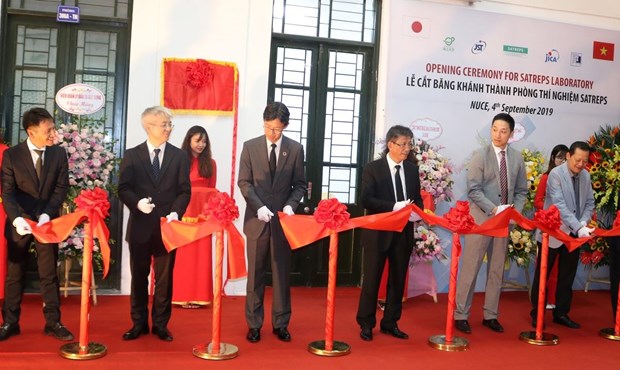 Environment
Environment


|
| Delegates cut the ribbon to inaugurate the SATREPS laboratory at the National University of Civil Engineering. — Photo courtesy of JICA |
HÀ NỘI — Việt Nam and Japan are working together to set up a construction waste management system to control pollution.
This is to combat the large volume of construction and demolition waste (CDW) produced from urban development which is rapidly increasing in Asian countries including Việt Nam.
The National University of Civil Engineering (NUCE) and the Saitama University (SU) on Wednesday held a seminar to provide a platform for researchers and students to exchange ideas and discuss research finding and new advances in sustainable development in East Asia.
This is the second joint workshop of the two universities for the SATREPS project for the "Establishment of environmentally sound management of construction and demolition waste and its wise utilisation for environmental pollution control and for new recycled construction materials in Việt Nam".
The project is expected to provide a platform for an environmentally sound waste management and resource recycling system in Hà Nội, applying technologies and experiences from Japan, where the rate of construction and demolition waste recycle reaches above 95 per cent.
At the workshop, participants shared their experiences on sustainable and environmentally-friendly construction waste management activities.
On the same day, the two schools also held the opening ceremony of the SATREPS project laboratory, which had been set up in NUCE’s laboratory building, with various testing and analytical equipment from Japan.
Major activities include the investigation of the generation status of construction and demolition waste and environmental pollution status at disposal sites of CDW, the development of standards for recycled materials, the development of various technologies utilising recycled materials, and the manufacturing and marketing of recycled materials on a trial basis.
Human resource development and capacity building for Vietnamese counterparts through joint testing and research activities utilising laboratories is also an important activity.
Speaking at the seminar, rector of NUCE, Phạm Duy Hòa, said this was an opportunity for experts and students of both universities to develop new technologies to solve key issues of management and techniques in structure, materials and environment of Việt Nam and developing countries.
“We are confident that this laboratory will become one of the region's leading research centres for recycling and new technology development,” he said.
The project proposal was adopted by the SATREPS Programme in the fiscal year of 2017, in response to NUCE's request for the implementation of international joint research in the environmental and social infrastructure sector.
This five year-project was then launched in Hà Nội and Hải Phòng in February 2018 with the aim of establishing a resource recycling system for CDW and developing new technologies utilising CDW recycling materials, in order to promote sound management of CDW. — VNS




